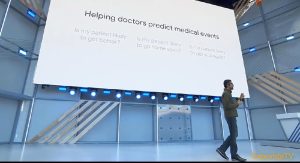Type 1 diabetes cured:in mice using stem cell
9 min read
New research uses an innovative technique to convert human stem cells into insulin-producing beta cells much more effectively. The insulin-producing cells created ‘rapidly cured’ type 1 diabetes in mice, and the benefits lasted for 9 months.
As many as 187,000 children and adolescents in the United States were living with type 1 diabetes in 2018.
An additional 1.4 million people aged over 20 years have the condition and manage it with insulin, according to the same statistics from the Centers for Disease Control and Prevention (CDC).
In type 1 diabetes, a faulty autoimmune response causes the immune system to attack and destroy insulin-producing beta cells within the pancreas.
Previous research has pointed to human pluripotent stem cells (hPSCs) as a potential therapeutic avenue for type 1 diabetes.
Pluripotent stem cells are an attractive option for researchers from a therapeutic standpoint because they can self-renew in lab cultures and can differentiate into a variety of cell types.
Researchers have previously used hPSCs to create insulin-producing beta cells. However, they were not able to do so effectively enough to cure type 1 diabetes.
Jeffrey R. Millman, Ph.D., an assistant professor of medicine and biomedical engineering at Washington University School of Medicine in St. Louis, is the principal investigator of the new study, which managed to overcome these previous obstacles.
He explains the challenges that halted the scientists’ progress until now. He says, “A common problem when you’re trying to transform a human stem cell into an insulin-producing beta cell — or a neuron or a heart cell — is that you also produce other cells that you don’t want.”
“In the case of beta cells, we might get other types of pancreas cells or liver cells.” While implanting these unnecessary — or “off-target” — cells does not cause any harm, Millman further explains that creating more of them offsets the number of therapeutically useful cells.
“The more off-target cells you get, the less therapeutically relevant cells you have,” he says.
“You need about a billion beta cells to cure a person of diabetes. But if a quarter of the cells you make are actually liver cells or other pancreas cells, instead of needing a billion cells, you’ll need 1.25 billion cells. It makes curing the disease 25% more difficult.”
However, the new research used an innovative technique that bypassed this problem. The findings appear in the journal Nature Biotechnology.






